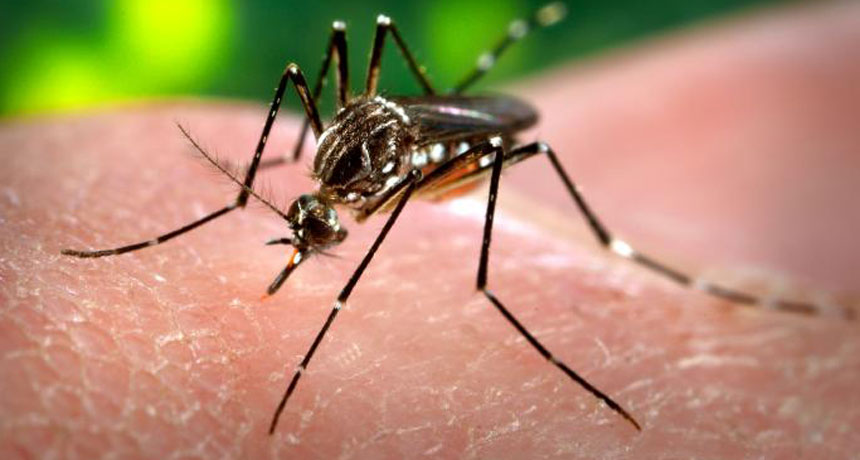Scientists Say: Zika
Mosquitoes are spreading this virus around the world

This mosquito is Aedes aegypti, a species that can infect people with Zika virus.
James Gathany, CDC/Wikimedia Commons
Zika virus (noun, “ZEE-kah”)
This is a virus — an infectious particle made of biological information wrapped in a protein coat. Mosquitoes can spread this germ. When a person is infected, the virus gets into her body’s cells. It then hijacks the machinery of the cell to make more virus. The virus takes its name from the place in East Africa where it was first spotted — the Zika forest of Uganda.
Most people who are infected with Zika virus will never know. But about one in five will get a fever, a rash and pinkeye — a red, runny infection of the tissue around the eye. Zika virus has been linked to microcephaly (My-kro-SEFF-uh-lee). This is a condition in which babies are born with small heads and brains that aren’t fully developed. But scientists still aren’t sure exactly how the virus triggers these effects.
In a sentence
With the spread of Zika infections in the Americas, travelers have been warned to be protect themselves from mosquitoes when heading to countries such as Brazil.
Follow Eureka! Lab on Twitter
Power Words
(for more about Power Words, click here)
Aedes aegypti A species of mosquito that can transmit the viruses responsible for several tropical diseases, including dengue fever, yellow fever and West Nile disease.
gene (adj. genetic) A segment of DNA that codes, or holds instructions, for producing a protein. Offspring inherit genes from their parents. Genes influence how an organism looks and behaves.
genetic Having to do with chromosomes, DNA and the genes contained within DNA. The field of science dealing with these biological instructions is known as genetics. People who work in this field are geneticists.
microcephaly A condition that leaves babies with abnormally small heads and partially developed brains.
pinkeye A highly contagious bacterial infection that inflames and reddens the conjunctiva, a membrane that lines the eyelids’ inner surface.
virus Tiny infectious particles consisting of RNA or DNA surrounded by protein. Viruses can reproduce only by injecting their genetic material into the cells of living creatures. Although scientists frequently refer to viruses as live or dead, in fact no virus is truly alive. It doesn’t eat like animals do, or make its own food the way plants do. It must hijack the cellular machinery of a living cell in order to survive.
Zika virus A virus that can be transmitted to humans via mosquitoes. About 20 percent of infected people get sick. Symptoms include a slight fever, rash and pinkeye and usually fade quickly. A growing body of evidence suggests that the virus could also cause a devastating birth defect — microcephaly. Evidence suggests it may also cause neurological conditions such as Guillain-Barré syndrome.







